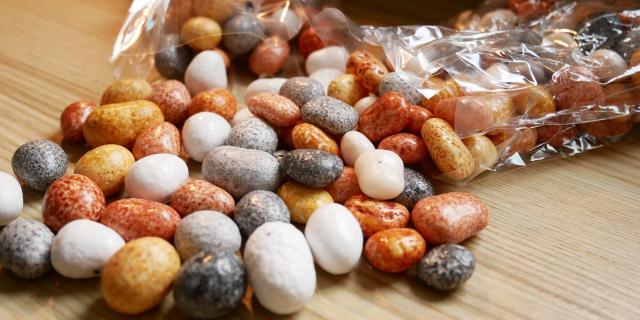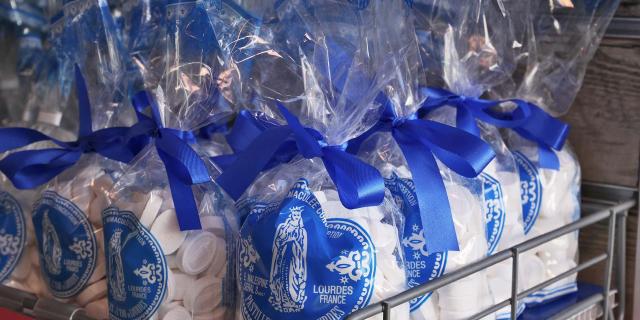

 Pause Aux Chocolats Pailhasson ©ot Lourdes
Pause Aux Chocolats Pailhasson ©ot LourdesThis cake was brought back from the Balkans by farmers conscripted into Napoleon’s armies in the early 19th century. It soon swept the countryside and became an essential feature of our festivities and weddings.
The cake is made from pancake batter, enriched by eggs, butter and sugar. It is baked for several hours on a cone which is 12 to 20 cm at the base and 30 to 60 cm long. The cone is placed on a spit above the glowing embers in the fire.
Cailloux du Gave (“River Gave Pebbles”) are sugar-coated, fruit-flavoured sweets.
The sweets from the Malespine pastille plant are made with water from the Grotto of Lourdes, icing sugar and natural flavouring, mint, lemon or aniseed.
 Cailloux du Gave
Cailloux du Gave Pastille Malespine 2
Pastille Malespine 2Our mountains are an ideal place to make honey. There are plenty of beekeepers in the region. Wildflower honey, mountain honey, sweet-chestnut honey, acacia honey, etc. are always a hit with children and adults. The castle close to Lourdes makes its own honey. So don’t hesitate to come and taste Lourdes honey.